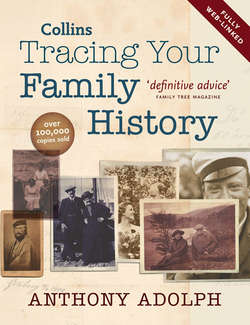Читать книгу Collins Tracing Your Family History - Ryan Tubridy, Anthony Adolph - Страница 134
IRELAND
ОглавлениеCensuses were taken every decade from 1821, but 1861–91 were destroyed by the Government and most of 1821–51 burned when the Four Courts were bombed in 1922. The surviving sections, which list all occupants, are at the National Archives of Ireland as explained in Collins Tracing Your Irish Family History (Collins, 2007).
The 1901 and 1911 returns, which were filled in by the householders (or enumerators on their behalf), have survived and are on open access, arranged by Poor Law Union and then by district, parish and townland, which are indexed. They list names, age, gender, religious denomination, marital status and relationship to the head of the household, but the place of birth is no more precise than the county or city, or country if born outside Ireland. The 1911 returns state how long women had been married and how many surviving children they had.
The 1901 and 1911 censuses have started to appear online at www.census.nationalarchives.ie. Otherwise, if you know a general location, you can check the heads-of-households lists, which accompany the census forms, for a townland or street name. The other approach is to seek an address from a GRO certificate first. Some heritage centres have their own indexes, which can be searched for a fee.
You can also check applications for old age pensions made between 1908 and 1921 where, as proof of age, extracts from the later-destroyed census returns could be submitted. The applications are indexed: copies are at TNA, PRONI and the SoG and www.pensear.org.
